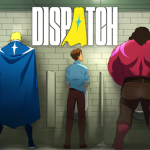Fortnite Tactics That Stick: Seasonal, Solo, and Squad Wins

Fortnite changes each season, but strong habits beat any patch. This guide gives you simple, proven steps that work in Build and Zero Build, for solos and teams. We focus on choices you can control: smart settings, landing plans, clean inventory, safe rotations, and confident fights. You will learn how to avoid risky moves, spot better paths, and turn more games into top placements.
Read a section, try the tips for a few matches, and come back for the next step. Keep the language simple in your head: see first, move safe, fight on your terms, and reset fast when things go wrong. Even small improvements add up. After a week of steady practice, you will feel calmer and more in charge of every moment.
Main Guide
Pick Your Focus: Build or Zero Build
Choose one mode to train first. In Build, your safety comes from walls, ramps, and edits. In Zero Build, your safety comes from terrain, timing, and gadgets. Both share core skills like aim, tracking, and decision-making. If you love fast duels, start with Build. If you prefer tactics and map play, try Zero Build. You can swap later, but focus helps you improve faster.
Settings That Help Right Now
Turn on “Visualize Sound Effects” to read footsteps, chests, and shots. Keep frame rate smooth; lower shadows and effects if you stutter. On controller, test Linear for snappy aim or Exponential for smoother curves; pick one and commit for two weeks. Set deadzones so your aim does not drift. On mouse, use a low or medium sensitivity so small wrist moves make fine changes. Bind separate keys for crouch, edit, confirm, and reset. Use preferred item slots so your guns always land in the same places.
Landing: Safe Plans Beat Hot Chaos
Pick two landing routes: one at a named POI for practice under pressure, and one at a quiet landmark for safer starts. Land on a weapon first, then grab shields and heals. Learn chest spawns, slurp barrels, and natural cover. If a stronger player contests your roof, peel off to your backup spot. Do not tunnel on one enemy in early chaos; clear the floor, heal, and take controlled peeks.
Loot and Inventory Logic
Use a simple structure: close-range (shotgun or strong SMG), mid-range (AR or DMR), one heal, one shield, and one utility. Swap long-range in if snipers are strong that season. Carry mobility whenever you can. Heals win endgames; keep at least two stacks. Upgrade weapons when cost is low or when a big jump in power matters. Drop flashy guns if you cannot feed them ammo or charges. Reload after each fight and before you rotate.
Movement: Stay Small, Stay Unseen
Sprint, slide, and mantle to break aim lines and move from cover to cover. Crouch to reduce noise when close to enemies. Use bushes, ridges, trees, and walls to block angles. Never cross a wide field without a plan; use smoke, vehicles, or a dash item when available. Jumping in open space makes you easy to track. Instead, strafe and change speed to throw off the enemy’s aim.
Fight Smarter: Start on Your Terms
Open the fight with the first shot from cover. Keep your crosshair at chest or head height while you move so you aim less when an enemy appears. In close range, hit a shotgun shot, swap to SMG, and finish. In mid-range, burst your AR to control bloom. If you break shields and the enemy hides, reposition rather than rushing straight in. If you get cracked, disengage, heal, and reset the angle. Third parties love loud, long fights, so finish quickly or get out.
Build Basics You Will Use Every Match
Make a safe box: four walls, a floor, and a cone roof. When shot, place a wall before peeking. Use right-hand peeks by editing a corner window. Place a cone and floor inside enemy space to block their edits (piece control) before you commit. For height, use a ramp with a protective wall and a quick side jump when needed. Keep mechanics clean and low waste. You want safety and angles, not sky towers that burn mats.
Zero Build Positioning That Wins Fights
Terrain is your shield. Hold high ground with cover, like rocks or rooftops. Take off-angles so enemies must show more of their body to shoot you. Open with beam damage, then push only when you break shields. Rotate early so you do not cross dangerous valleys late. Keep a mobility item for the final circles. In the last zone, play edges with cover and avoid getting pinned in the lowest ground.
Rotations and Storm Management
After each circle update, plan a primary path and a backup path. Move early to claim strong positions: ridges, multi-exit buildings, or hills that stay useful in the next zone. If you must rotate late, swing on the safe side of storm and hug cover. Tag rotating enemies from height for easy pressure, but do not overextend. Your goal is zone control and safety, not a risky chase.
Vehicles, NPCs, and Map Objectives
Vehicles are great for fast moves, but they are loud and attract attention. Use them for long rotations, then park behind cover and move on foot. Hire helpful NPCs for extra fire or heals when the season offers them. Secure vaults or capture points only when you have info and cover; they make noise and invite third parties. If bosses exist, clear nearby threats first, then take the fight with good sightlines and escape routes.
Team Play: Roles and Simple Calls
In duos and squads, assign roles. Entry starts fights. Anchor holds power positions. Support carries extra heals and utility. Scout keeps info on flanks. Use short calls that lead to action: “Two on roof, cracked one, pushing left.” Swing angles together so you trade fast. After fights, share shields, ammo, and mobility. Mark Reboot Vans before you need them, and revive behind cover, not in the open.
Economy: Bars, Keys, and Perks
Save gold bars for high-impact buys: upgrades, heals, or rerolls that fit your plan. Keys and access items should unlock gear that fills a gap in your loadout, not just a shiny gun. If the season has perks or augments, pick ones that match your role—mobility for rotations, scavenger perks for sustain, or weapon perks that boost your main gun. Do not chase every drop; take the ones you can defend.
Practice Plan That Fits Busy Schedules
- 5 minutes aim: tracking and bursts in creative or an aim map.
- 5 minutes mechanics: box up, right-hand peek, cone control.
- 10 minutes realistic fights or Zero Build cover drills.
- 3 matches focused on one goal: landing, rotations, or endgame.
- Review one clip: name one good habit and one fix for next time.
Performance and Clarity
Stable frames beat fancy graphics. Cap FPS slightly below your average to smooth frame time. Lower shadows and effects first; keep textures moderate for clear targets. Reduce HUD clutter so enemies do not blend into icons. Use a crosshair color that contrasts with the current biome. Keep audio clean; raise SFX, lower music, and use Visualize Sound if it helps you read the fight faster.
Common Mistakes and Quick Fixes
- Running in the open: rotate along cover and use terrain lines.
- Over-looting: fight with a good kit instead of searching forever.
- Reloading in view: hide, build, or crouch behind cover first.
- Chasing one player into third parties: secure space, then re-engage.
- Ignoring the next zone: plan two circles ahead, not one.
Conclusion
Winning more in Fortnite is about steady, simple habits. Choose your mode, tune your settings, land with a plan, and carry a balanced loadout. Use cover or builds to control angles, rotate early to power spots, and fight on your terms. Keep a small daily routine for practice and review one clip each session. With calm choices and repeatable patterns, your win rate will rise across seasons.
- Always carry heals and one mobility item.
- Open fights from cover; if cracked, reset and heal.
- Right-hand peeks in Build; ridges and off-angles in Zero Build.
- Rotate early and claim height or safe edges.
- Use short, clear team calls and trade together.
- Spend gold on power spikes, not impulse buys.
- Practice 20 minutes a day and fix one habit at a time.
















